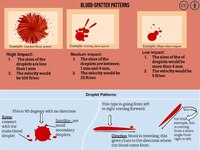
Photo from wikipedia
Abstract Liquid-liquid flow patterns and slug hydrodynamics were experimentally studied in non-circular glass microchannels with water-butanol, water-toluene, water–oil and water-hexane systems, considering various hydraulic diameters (600 µm, 400 µm, 200 µm), inlet junctions… Click to show full abstract
Abstract Liquid-liquid flow patterns and slug hydrodynamics were experimentally studied in non-circular glass microchannels with water-butanol, water-toluene, water–oil and water-hexane systems, considering various hydraulic diameters (600 µm, 400 µm, 200 µm), inlet junctions (crossed, T) and aspect ratios (0.5, 1). The aqueous phase was the continuous phase due to the hydrophilic microchannel walls and the organic phase was the dispersed phase. Three main flow patterns were observed, i.e., annular flow, slug flow and droplet flow. The mechanism of flow pattern formation was explained by a force analysis, based on which, a dimensionless analysis regarding Weber number and Reynolds number was performed to develop general flow pattern transition criteria. Additionally, slug velocities and slug length were investigated. A new scaling law was proposed to predict the slug length and it showed a good agreement with the experimental results. A linear relationship between the slug velocity and the bulk velocity of the two phases was obtained.
Journal Title: Chemical Engineering Journal
Year Published: 2018
Link to full text (if available)
Share on Social Media: Sign Up to like & get
recommendations!